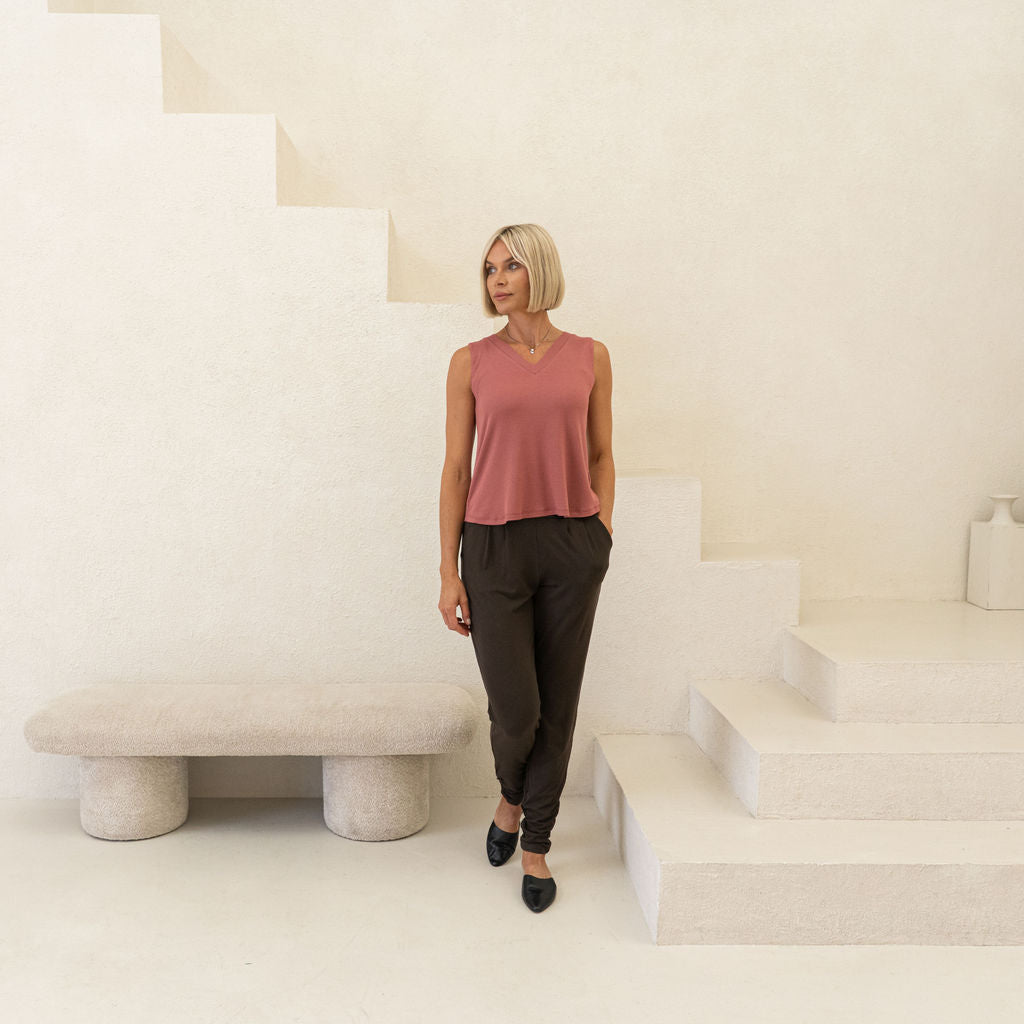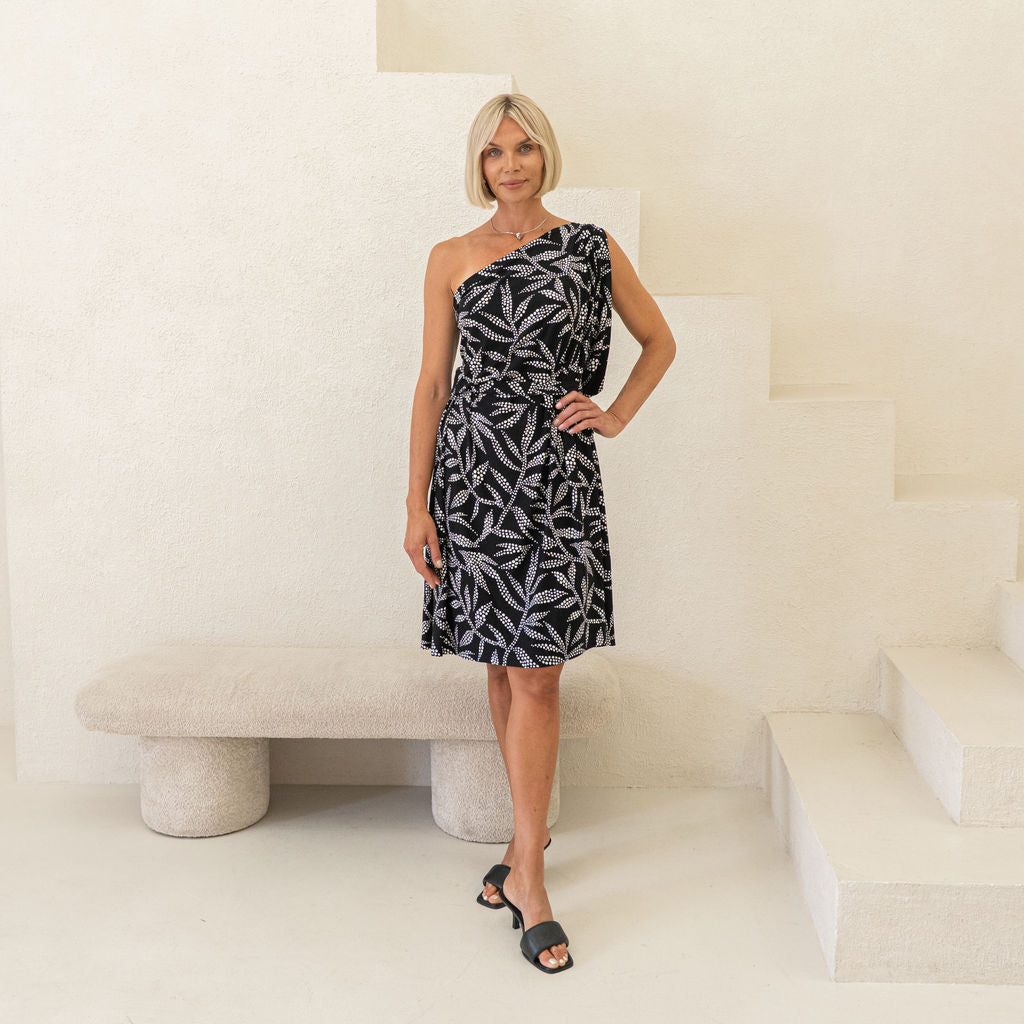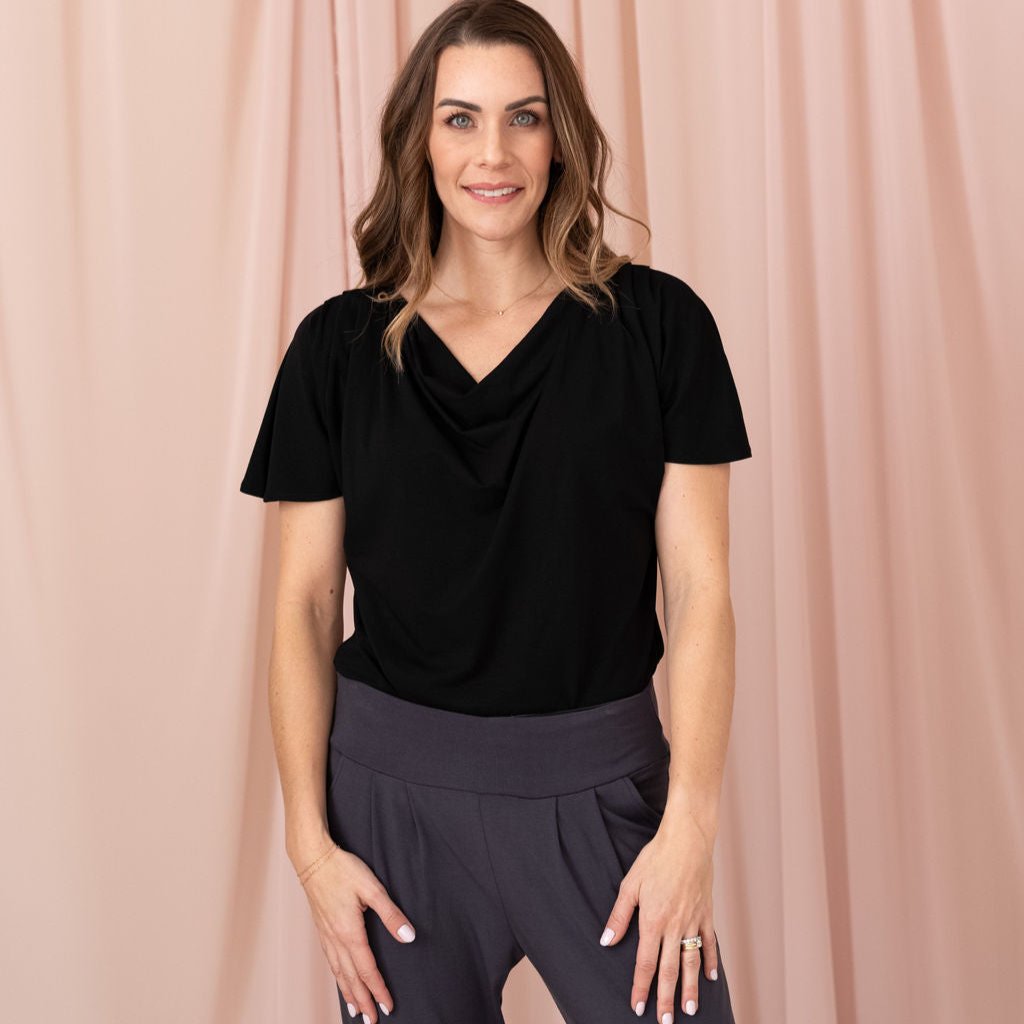Why Made in Canada Matters

Made in Canada matters to us, and I think if you're reading this - it matters to you too.
Not because Canada is the best country in the world (though biased - I do think it's pretty great), but because making clothing in a developed country ensures certain things are present that are rarely in place in overseas manufacturing.
By law in Ontario (the province in which we make our clothing in Canada), there are strict labour regulations that govern working hours, working conditions, wages, age required to work, vacation and guard the right to unionize. There are environmental regulations that prohibit dumping fabric dyes in lakes, rivers and waterways. There are building regulations that require fire extinguishers/sprinkler systems, structural soundness, carbon monoxide detector, ample light and ventilation.
The things that you probably think are standard in clothing manufacturing, or business in general, because in your home country - they most likely are. The reality is that in many underdeveloped countries, these conditions are a luxury - not always required, and rarely present or checked up on.
The reality is that the fashion industry is still rife with overseas sweatshops.
These type of sewing operations regularly employ children, have long 16+ hour work days, and have horrendous working conditions, some of which require workers to live on premise. They have limited breaks, poor ventilation, structural issues in the building, no fire extinguishers or fire exits, and above all that - low wages.
We've all seen the tragedies in the past few years; The Rana Plaza factory collapse (1,100+ dead and 2,500+ injured), The Tazreen Factory Fire (117 killed, 200 injured), Mirpur Factory Fire, The Spectrum Factory collapse, and more.
Let me ask you this - is that worth it for an $8 tank top?
Worse yet, many of the brands implicated in these disasters continue to still work in the areas and have provided minimal compensation to victims.
If you haven't done so, I encourage you to watch the documentary The True Cost. It's available on Netflix and takes a stark look at the fashion industry.
 If you're buying an $8 tank top - there's a compromise along the way to human rights, the environment, or most likely both.
If you're buying an $8 tank top - there's a compromise along the way to human rights, the environment, or most likely both.
Let me break down how that might work for an $8 tank top, based on a popular fast fashion retailer's gross margin of 57%.
Inputs to the tank top must total $3.44 to generate a 57% gross margin. That scant $3.44 must cover all of six approximate costs below:
- About 1 yard of fabric (including dying and finishing)
- Cutting, sewing, pressing, and finishing costs paid to contractor*
- Care label, size tag and brand label
- Polybagging
- Hang tags
- Shipping to US/Canada for sale
That's A LOT of stuff to be paid for using that $3.44. So, you can only imagine that even if items 3-6 are about $1 in total, that's $2.44 left to cover the costs paid to the manufacturer and the fabric.
Let's split that $2.44 equally to the leftover costs of #1 Fabric and #2 Sewing.
That's $1.22/yard for fabric, and $1.22/per piece to the sewing contractor.
Fabric
Our fabric is super premium, sustainably sourced, OEKO-TEX 100 certified and in some instances, even knit here in Canada. We average between $8-$20/yard depending on the fibre and quantity. In comparison, paying $1.22/yard for fabric will likely not get you a high quality of fabric, and the fabric will likely not be produced or sourced in a sustainable or ethical way. This cost needs to also cover the creation, dying, finishing and shipping of the fabric. You're probably getting fabric that will warp, shrink and pill after a few washes. It just can't be a resilient fabric at that price, even at the volumes these companies buy.
Sewing Costs
Paying $1.22/per piece to a sewing contractor for a tank top is REALLY low. Keep in mind that $1.22 is what the sewing contractor gets paid NOT the worker. There needs to be significant profit in there for the contractor, and margin to cover their costs. When you break it down that way, the worker is probably earning somewhere between $0.10-$0.25/per piece.
If a garment costs more, does that mean it's ethically made?
Nope.
Sorry.
I wish that was true but there is no research to show that a more expensive good has better working conditions for the sewing team. In some cases, you may see a more premium fabric involved, but in many cases, it's just more margin (profit) for the retailer.
You see, a fast fashion retailer relies more on volume to generate a profit. Whereas a more traditional retailer that has less collections consequently has a higher price because they don't generate the same frequency of sales.

So, how do I know if something is ethically-made?
You'll need to do the legwork to investigate the brand yourself. Le sigh!
Although over the past few years, under pressure from the media, many fast fashion retailers have listed their manufacturers on their website. While I believe that’s a step in the right direction of transparency, it’s often totally useless information.
What these retailers don’t list is how workers are treated, working hours, or even show photos of the places they’re working, or how they’ve performed on audits.
Good news is there are many excellent resources out there who have round-ups of ethically-made brands such as The Good Trade, Sustainably Chic, and Selflessly Styled.
There’s also an app that we just found out about called DoneGood which rates companies on a variety of ethical measures.
The companies who live by their values of ethically-made make it VERY evident on their website. Those that don’t - do that for a reason!
If something is made in a more developed country like Canada, or USA, there is a good chance there’s a fair-treatment of workers and respect for the environment, however, it’s always good to dig deeper as I’ve heard there still are on shore sweatshops, especially in parts of the USA.
What does designed in (Name the Country) mean?
If you see “Designed in Canada” on a label, it’s a great way to distract you from the fact that it’s made elsewhere. It just simply means the company is likely headquartered in that country. No manufacturing is done in the actual country.

Why we continue to make clothing here
Producing here in Canada has it's benefits for us - and no, we don't get a tax break (I wish!).
We get to keep a close eye on quality, we get to develop amazing relationships with our contractors, as all of ours are just a 30 minute drive away (or less), and we can feel confident knowing that human rights and the environment are being respected.
And guess what? So can you.
We also get the added intangible benefit of knowing that we’re helping rebuild an industry that started to disappear when trade levies were lowered on imports in the 1990s.
That's why supporting Made in Canada should matter to you.
So happy 150th birthday to Canada! We’re proud to be Canadian and be designed AND made 100% in Canada.
I invite you to check out our recently redesigned “Made in Canada” section on our site where you can learn more about each of our contractors. Feel free to email us or reach out on social media if you have any questions about where our clothing is made, or how.
Please continue to ask “Who Made my Clothes” -- it’s so important for consumers to step up and hold brands accountable for driving higher standards in the industry overall.
Remember, you vote with your dollars. Support ethically made.
Love travel? Join our League of Travelistas -
A community for women who love to travel. Click here to request access to our private facebook group.
All photos are copyright Encircled. Contact us for permissions/rights to re-use or repost images.






1 comment
It’s a quite nice blog.
Pure Mart is a newly Canadian online store striving to keep you healthy.We are bringing you all your favorite healthy food & snacks and the best healthy alternatives to achieve your fitness goals, pretty much in one place. Enjoy our range of products that help you to get fit and guilt free. https://www.puremart.ca/
Leave a comment